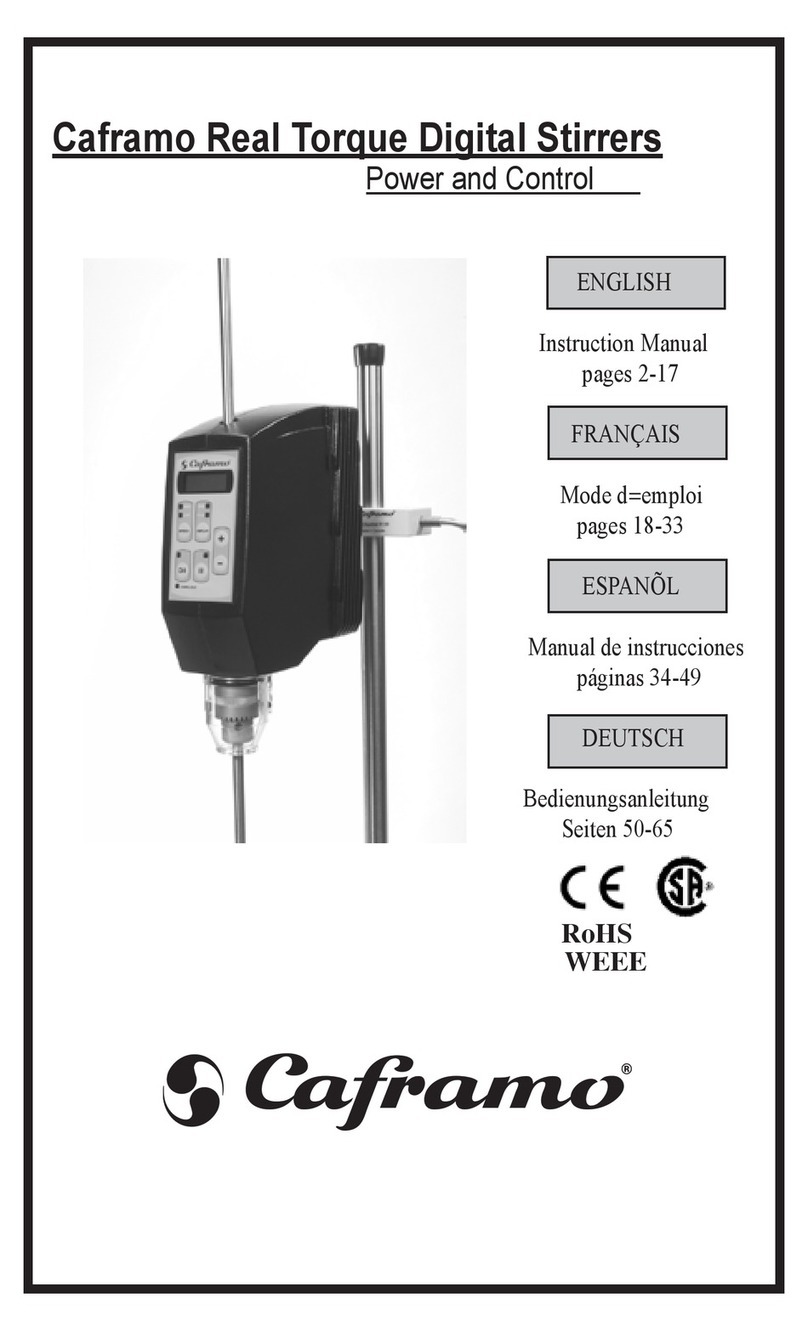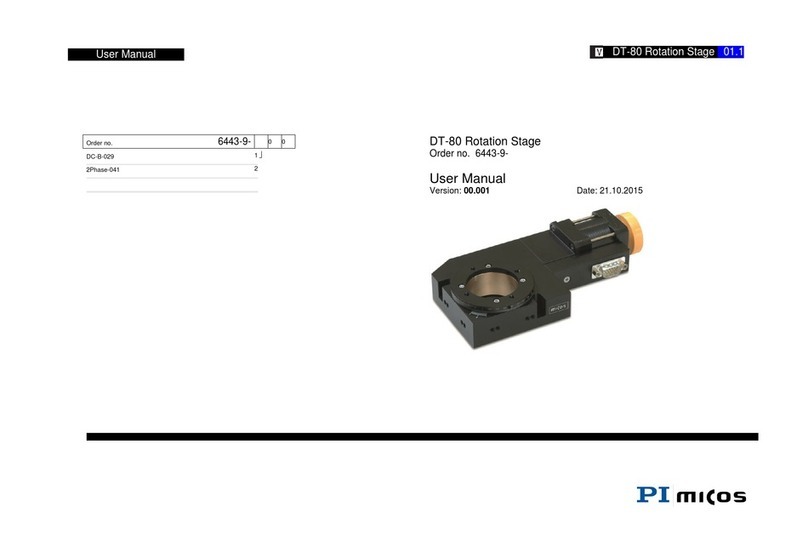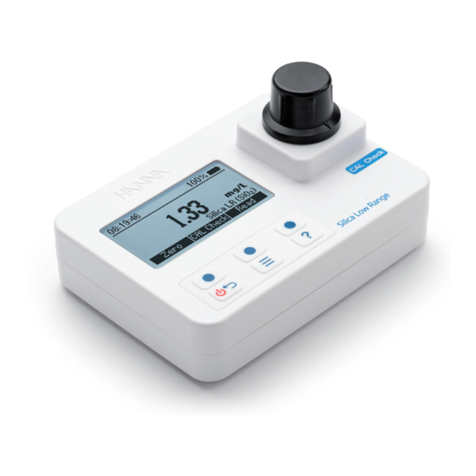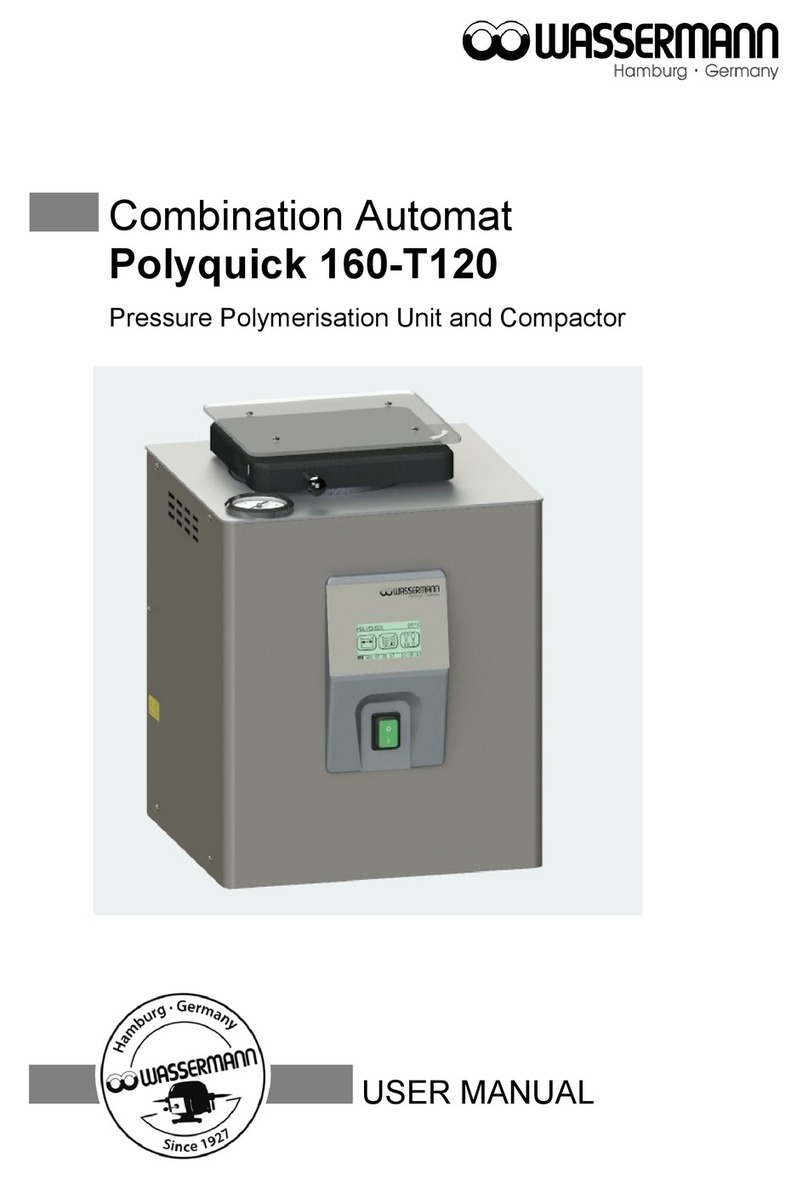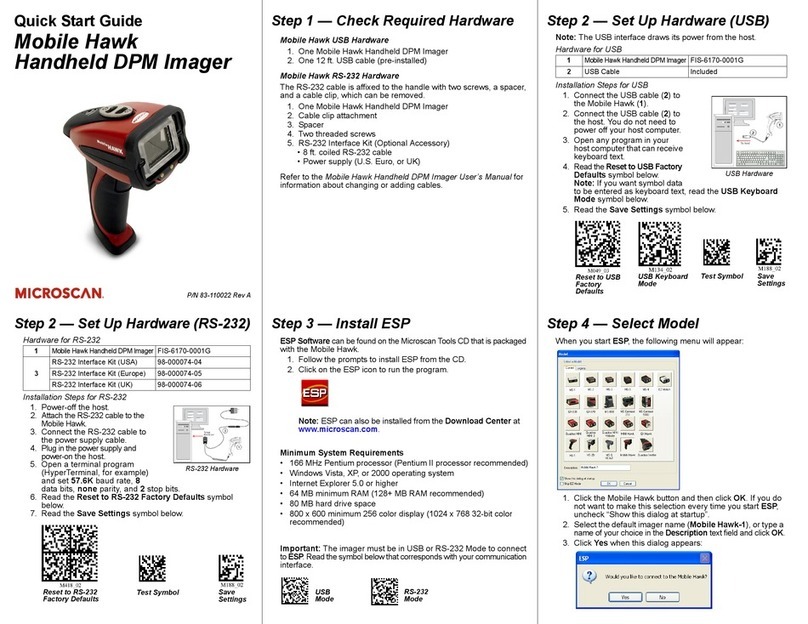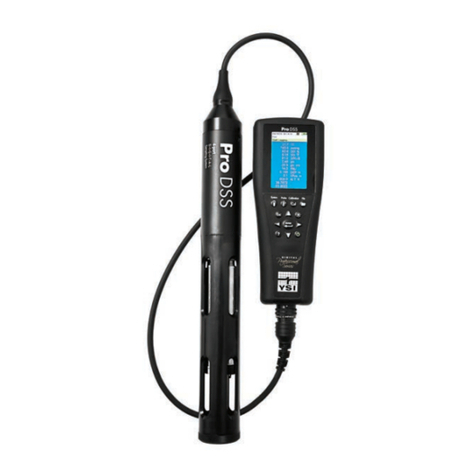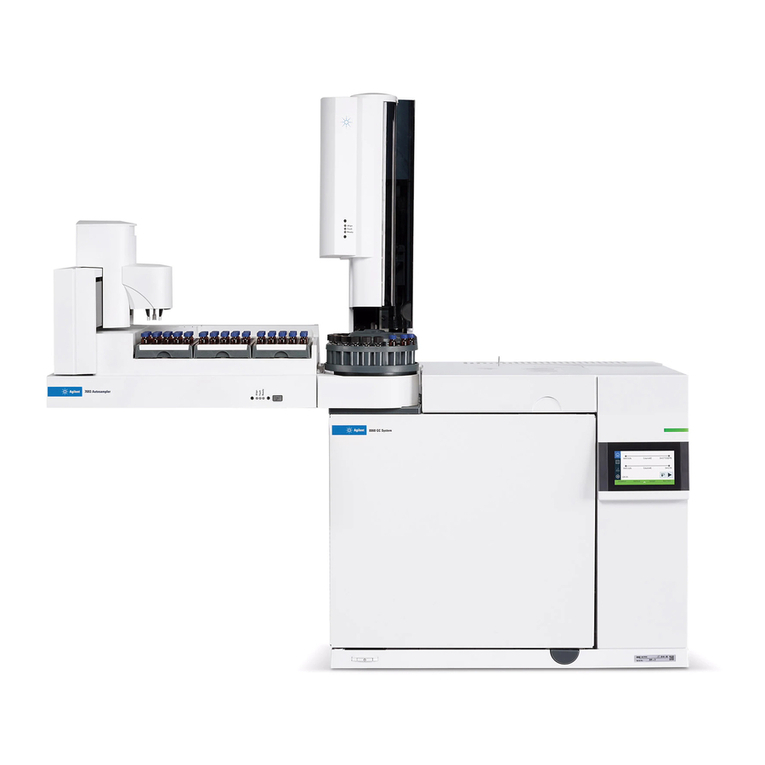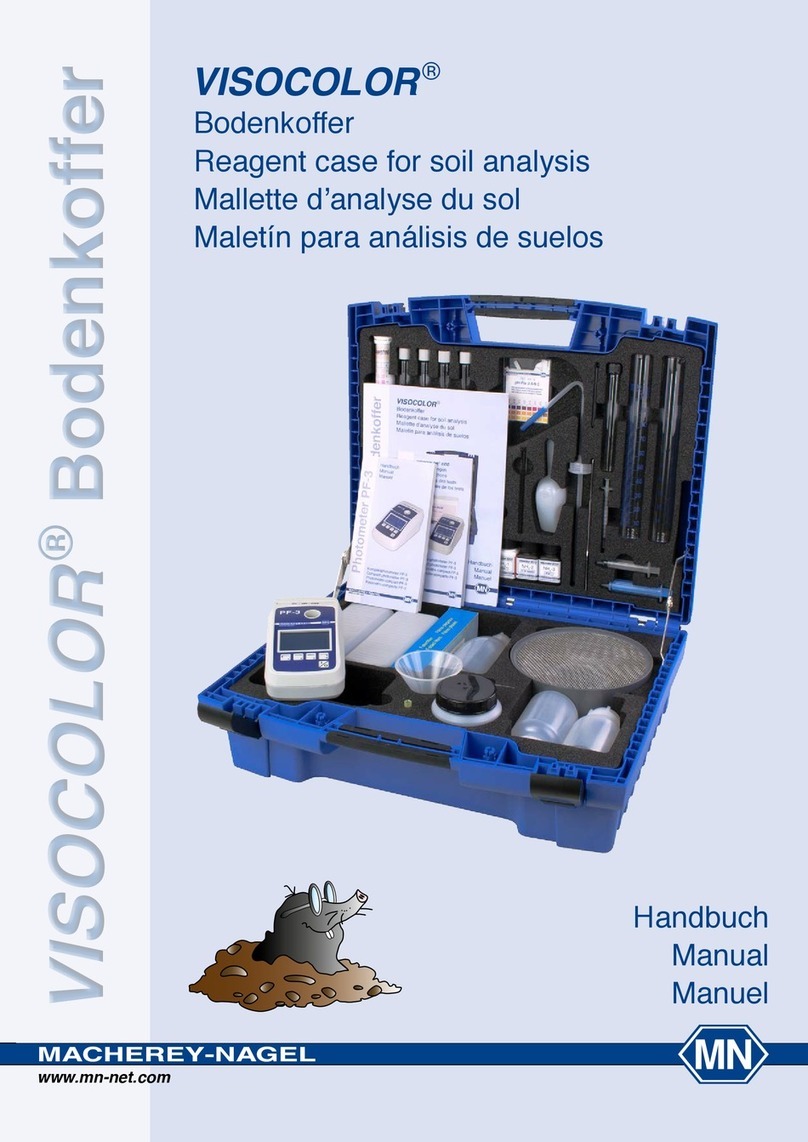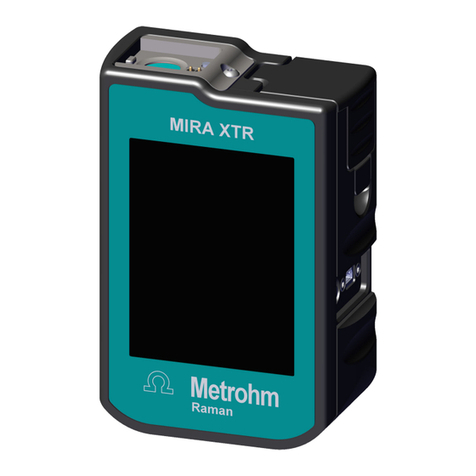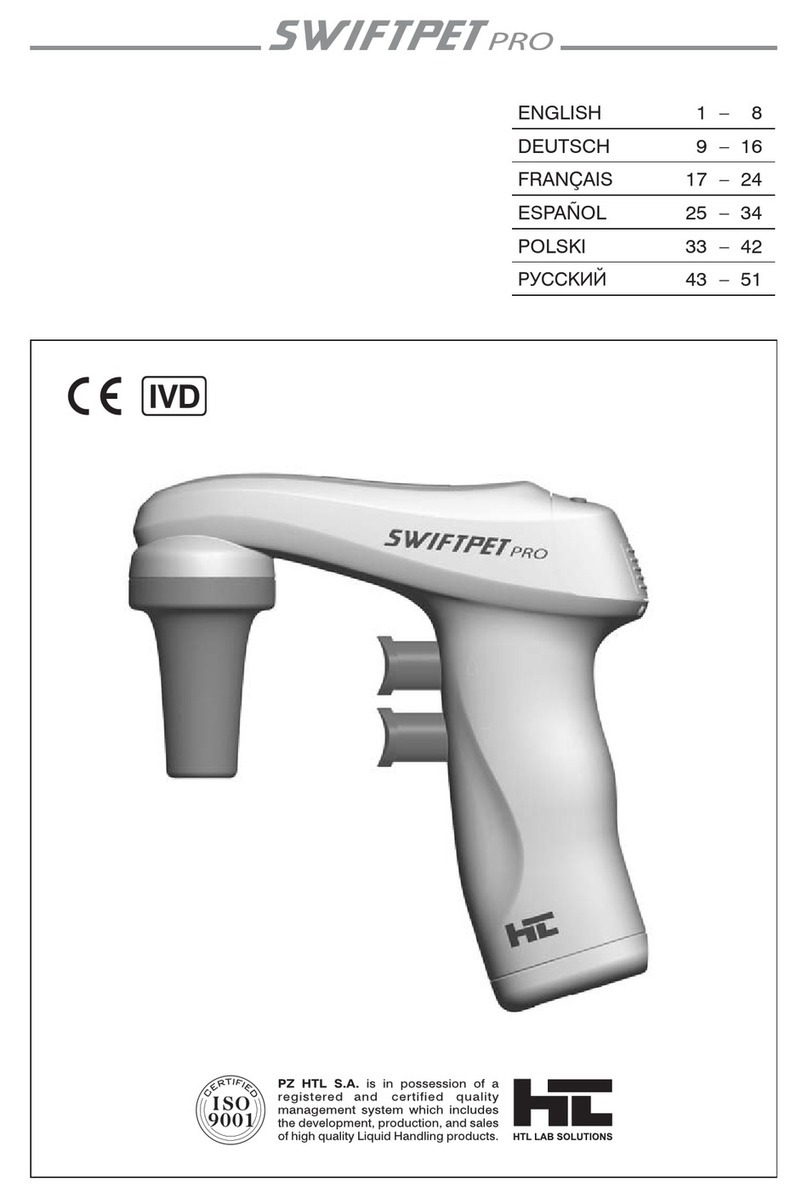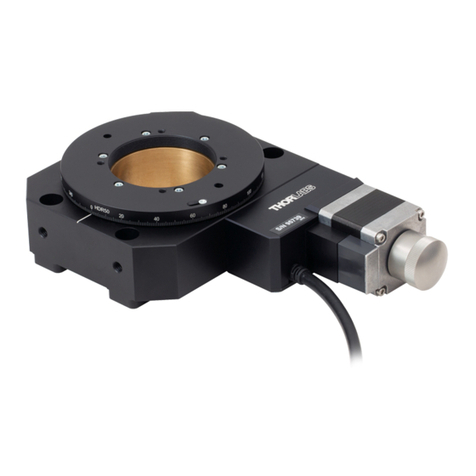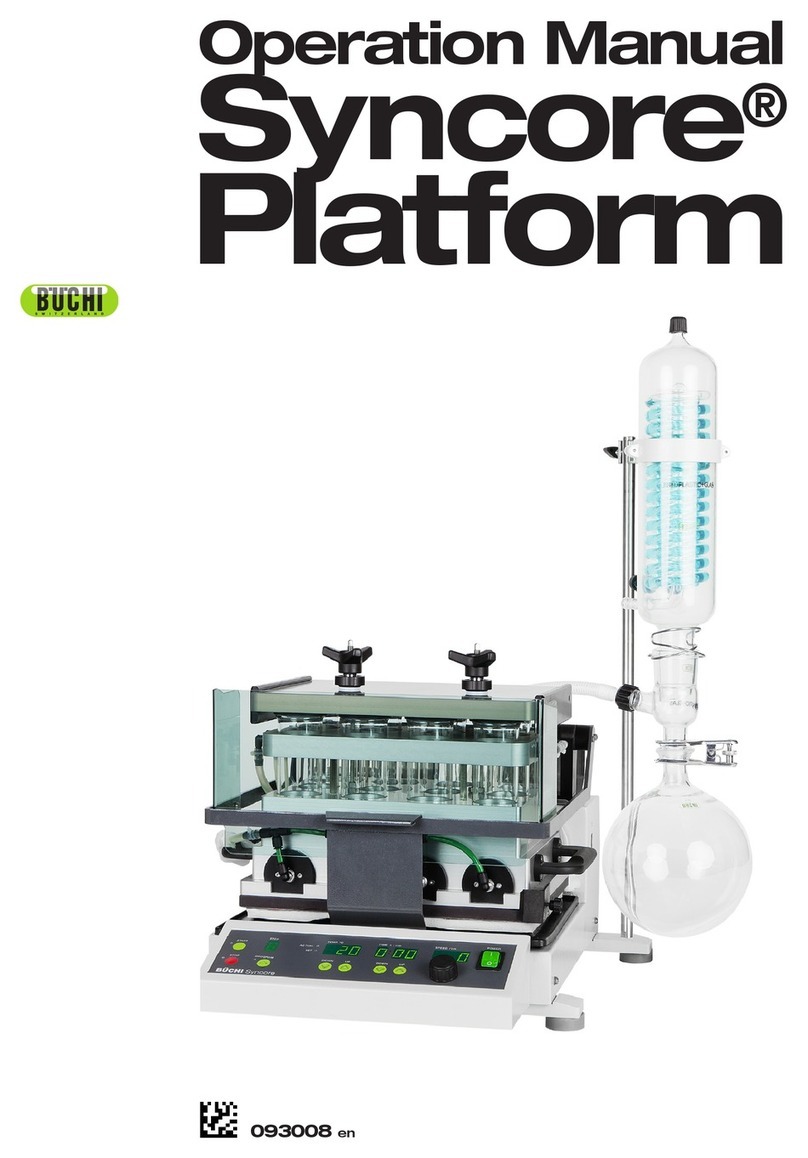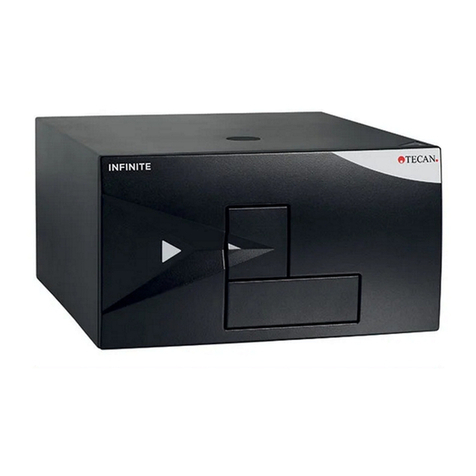Bartington Helmholtz Coil Use and care manual

HELMHOLTZ COIL INSTALLATION AND CALIBRATION
Helmholtz Coil installation manual
The following manual provide information about the use of Bartington Helmholtz Coil system and
considerations on positioning and orientation of the coil in order to ensure optimum performances are
obtained from the system. The document refers to additional documents such as the operation manuals
for separate system elements.
1. Positioning of the coil
The Bartington Helmholtz coil systems provide users with the ability to generate stable magnetic fields.
Due to the nature of the instrument however, the field generated are leaked out of the coil, and in reverse,
external fields have the ability to distort and affect the field inside the set of coils. Because these systems
are used to generate magnetic field of amplitude similar to or within about an order of magnitude of the
Earth’s magnetic field, they will be very sensitive to external environmental factors.
The first consideration should therefore be about finding a suitable location for the Helmholtz coil.
Ideally the site should be:
•A site where permanent field distortion or gradient within the coil are negligible
•A site where transient field distortions are avoided.
Whilst each installation and each site will be unique, there are some general recommendations which
can be given here.
To prevent permanent gradients across the coils, the system should be installed in an area clear from
permanent/fixed ferromagnetic structures such as support beams, reinforced concrete, or steel shelving
as these will distort the local magnetic field. If a coil is located too close to these elements, they will cause
distortions of both the Earth’s field as well as any field generated by the coil, thus affecting the
homogeneous volume within the coil and creating gradients across the coil, reducing the performance of
the system. A non-exhaustive list of structures and elements to keep in mind is given here: metal beam
structures, metal partitions and wall covering, fences, reinforcement bars within concrete, DC current
carrying wires, metal shelving and furnitures, machinery, parked vehicles.
It is equally important to remove transient interferences caused, for example, by personnel moving
with equipment which can cause field distortions (this can range from tools with magnetic tips, to phone
or steel framed trolleys etc…), or objects having a consequential mass of ferromagnetic material moving
further away (vehicles, lifts etc…). The movement of these objects will cause low frequency field
variations, but can also, if passing close to the coils, generate slowly varying gradients across the coils.
Another consideration especially if running the coil at AC is the effect eddy currents may have. The
presence of electrically conductive material in the vicinity of the coil can see itself affected by the field
generated by the coils. In turn, eddy-currents may circulate within the material and lead to the generation

HELMHOLTZ COIL INSTALLATION AND CALIBRATION
of secondary fields which may affect the signal within the coil. The closer the material is to the coil the
worse the interferences will become. The presence of conductive material should therefore be carefully
considered and avoided where possible. For example, the coils should not be set on the ground (where
metal beams or reinforcing bars may be located), or on or close to metal shelves and tables.
In both cases, the size of the object will dictate the distance of clearance to the coils. In order to
determine whether a site is suitable, a site survey using one or more magnetometer(s) is recommended.
This can be typically be carried out using Bartington’s Spectramag-6 and two Mag-13 or Mag690 sensors.
The use of two sensors can allow to perform gradient measurements to determine the differences
between two points, typically the centre and edge of the homogeneous volume of the coil at the planned
site. A separate site survey document is also available.
To reduce the impact of local field distortion, the use of the CU2 closed-loop module can enable
external distortion to be cancelled out within the coil at the location of the reference magnetometer
typically mounted in the centre of the coils. However as only one reference sensor is used, the CU2 closed-
loop module does not cancel out the presence of gradients within the coils. Any gradient present will see
itself being shifted up or down so that the point where the reference magnetometer is located read 0 (or
whatever value field is applied to the coils).
Typically, this will mean having a clearance of a few meters (also coil dependent, the larger the coil,
the larger the clearance area) from structures, shelves, phones, laptop etc… and an increased clearance
from area accessible by vehicles, especially if these are larger vehicles.
Any equipment to be used in the vicinity of the coil (tables, chairs etc…) should also be checked for
hygiene as for example swivelling chairs tend to have a relatively large magnetic signature. All these
elements can be checked either during the site survey stage, or with equipment typically supplied with
the coils.
2. System components
A complete Helmholtz coil system will include the coils, the PA1 Power Amplifier, CU1 Control Unit
(which is used to interface the PA1 with an ADC card/PC), the CU2 Closed-loop module (optional but
recommended if operating mainly at DC and low frequency below mains power frequencies), a National
Instruments ADC card and a PC (running the operating software enabling field generation).
Additionally, a Mag-13MS (range determined by the coil used), Mag-13 cable, Mag-13 Mounting Jig
will be recommended to be used for initial system calibration, and regular system checks thereafter.
The clearance recommendations apply not only to elements external to the system, but also apply to
parts of the system. The coils are supplied with a 3m long cable that connects to the PA1. The whole length
should be used, and the PA1 should be located as far as possible from the coils, together with the CU1,
ADC card and PC.

HELMHOLTZ COIL INSTALLATION AND CALIBRATION
3. Precautions of use
Some precautions are required when using the equipment. Certain elements of the system are heavy
and should not be handled by one person alone. Coils and PA1 should always be carried by multiple
people. In the case of the coils, they should not be lifted by the coils themselves but instead using the
supporting structures (upright pillars in the case of the HC1/9/16). When assembling the HC2, multiple
people will be required to hold the coils in place and fit the supporting brackets at the same time.
The PA1 can generate large currents. Under no circumstances should the PA1 be opened when plugged
into mains power. Any maintenance operation in the clearance of air intake filters should be done with
the PA1 off, and the mains supply disconnected. Mains connection should be suitably grounded.
Connection of the coils to the PA1 should be secure, ensuring that the connector is pushed in and rotated
until a click can be heard, and the connector cannot be pulled out without depressing the metal tab and
rotating the connector.
The magnetic field generated by the coils, whilst not very high, may interfere with medical devices.
Any equipment susceptible to magnetic field should be kept away from the coils. Refer to the specific
coil’s operation manual to see field amplitude at given distances.
4. Assembly and Orientation
The HC1, HC9 and HC16 come pre-assembled. Only the HC2 requires assembly on site (in addition to
the 2m Ferronato coil). Assembly instructions for the HC2 can be found in the HC2 Operation Manual.
The coil’s orientation should be carefully considered. As part of the original setting up of the coil
consists of zeroing the coils for the local environment, the orientation of the coil should be chosen to
reduce the amount of current used to cancel out the field. The larger coils will typically have a lower field
to current ratio, and the smallest will have a higher one.
It is therefore recommended to sit the coil so that, within the mechanical setup of the coils, the
smallest available coil generates a field in the North/South direction (approximately or whichever is the
direction of maximum field in the horizontal plane). This can be determined at the time of the site survey,
or at the time of installation. Positioning the coils in any other directions will lead to a higher current
requirement to cancel out the Earth’s field. Whilst not an issue in most cases, it may become a limiting
factor if attempting to generate fields at the limit of the coil’s performance (or if the field/current ratio of
the coils are low).
5. Setup
Once a suitable site has been found, the system can be connected together. First connect the coils to
the PA1. Then connect the PA1 to the CU1 (two connections between these two elements takes place,
between the Current Control Input/Output and the Current Monitor Input/Output). If using the CU2, this

HELMHOLTZ COIL INSTALLATION AND CALIBRATION
should also be connected now. Report to the connection diagrams below for cases with the CU2. Next
connect the CU1 to the National Instruments acquisition card and finally connect the NI card to the PC.
If using the CU2, the CU2 reference magnetometer should be placed within the coils and aligned to the
coil’s axes. When mounted in a Bartington coils, the CU2 Reference Magnetometer mounting face (the
one engraved) will be down, with the potting facing upwards.
Mains connections for the PA1, CU1 and PC can now take place. The power up order should be as
follow:
•PC, including starting the Bartington Helmholtz Coil Control Software
•National Instruments card
•PA1
•CU1
Note that if there is a connection issue between the CU1 and the NI card and PC, or that the software
is not opened, an alarm will sound in the CU1. The alarm will turn off once all elements including the
software are opened/switched-on.
The system now needs to be left to warm-up for at least 6 hours prior to calibration. This ensures that
calibration takes place with the system being stable. In the meantime, the Mag-13MS mounting jig can be
placed within the coils using the necessary support pillars/table provided (coil dependent). The jig should
be mounted so that the sensor’s Z axis (along the length of the sensor) is aligned with the coil’s Z axis
(refer to the axis orientation label on the coil). The Mag-13MS can also be connected to the CU1. If
choosing the Auxiliary input, the sensor will be automatically powered. If choosing to connect it to the
device under test (this will be compulsory if using the CU2), you will need to switch the power supply to
DUT to 12V in the control software. The input type should be set to differential where the Mag-13 is
connected, and if using the CU2, the auxiliary input should be set to single-ended.
Once at least 6 hours have passed, the system is now ready for calibration checks.
6. Calibration
Systems are calibrated at Bartington after manufacture. However disassembly (for some coils),
transport, handling may affect some of the mechanical positioning of the coils, and therefore slightly
affect the system accuracy. Furthermore, DC offsets are specific to a given site and orientation of the coils.
These therefore need to be accounted for and adjusted. Three parameters are typically checked and
adjusted, DC offsets, scaling and orthogonality. The process to check each is described below.

HELMHOLTZ COIL INSTALLATION AND CALIBRATION
Figure 1: PA1 Front Panel
•Offsets:
These are the DC offsets associated with the local Earth’s field and any material surrounding the
system. Place the Mag-13MS in the centre of the coil, using the provided mounting jig. Opening the
Bartington Helmholtz Coil Control Software, set the coil to the correct type. Generator tab settings should
be set to:
oSet the field generation to 0 and DC.
oSet the generation to off.
oIf the sensor is connected to the Device Under Test, set DUT PSU to 12
Scaling
trimming
Orthogonality
correction
Static field Offset
setting

HELMHOLTZ COIL INSTALLATION AND CALIBRATION
Figure 2: Generator Tab - Offsets
In the read tab, the settings should be set to:
oSet the readings as DC.
oSelect the appropriate data to be read (AUX X Y and Z if the sensor is connected to the
Auxiliary input, or DUT X Y and Z if connected to the Device Under Test port).
oPress start read. You can select to switch between field amplitude readings or voltage
readings. If using the field amplitude reading, ensure that you are selecting the correct
measuring range for the sensor. On the Mag-13, the number that follows is the full range
of the sensor and corresponds to 10V.
The aim is now to trim the Static field offsets potentiometers (see Figure 1), and adjust these until the
field obtained is the lowest achievable. To release the potentiometers, release the locking nut until the
potentiometer can turn.
The minimum field value which can be achieved will be coil dependent, and also dependent on the
background noise. You should however be able to achieve field levels in the nT to few tens of nT range.

HELMHOLTZ COIL INSTALLATION AND CALIBRATION
Figure 3: Read Tab - Offsets
Once you have achieved the lowest possible reading, lock the locking nut (ensuring that you keep the
potentiometer in place). Note that you may need to progressively tighten the locking nut, and fine tune
the offset as you do so.
•Scaling:
This is a check (and adjustment if required) to ensure that the coil is generating the appropriate field.
With the sensor remaining in the same position as for the offset checks, return to the generator tab. The
settings should be as follow:
oSet the amplitude to ¾ of the sensor range or the maximum field which can be generated by
the coils, whichever is the lowest
oSet the frequency to 35Hz
oSet to Sinewave
oSelect each axis in turn (after each axis is selected, you will need to go to the read tab).
Other information required will be the scaling error of the sensor, as these can be taken into account
and used to fine tune the accuracy. For example, if the sensor’s scaling error is +1% this means that for a
field of 100uT, the sensor will read 101uT. An error of -1% will mean that the sensor will read 99uT in a
100uT field.

HELMHOLTZ COIL INSTALLATION AND CALIBRATION
Figure 4: Generator Tab - Scaling
In the read tab, the settings should be as follow:
oSet the reading to RMS or PK-PK whichever is more convenient. For a pk-pk setting, you should
read twice the applied field in the generator tab (or whichever value is adjusted to take into
account the sensor’s scaling error). In RMS, this value will be 70.71067 * the field applied in
the generator tab (or the adjusted value to account for the sensor’s scaling error).
oSet the filter to 1 or 10kHz
oStart read and check the value for the axis being used. If the value is not that of the target
value, adjust the trim potentiometer which can be found on the PA1 front panel behind a
plexiglass panel. There is one for each axis X trim, Y trim and Z trim (see Figure 1).
Repeat the process for Y and Z.

HELMHOLTZ COIL INSTALLATION AND CALIBRATION
Figure 5: Read Tab - Scaling
•Orthogonality:
This task requires the use of a separate software. Please contact GMW for details. In addition to the
software, 3 files available from GMW are needed.
The first is a file titled Test Equipment Status.tsf and can be created in notepad if not available. In the
file description below, any entries in () are comments and should not be part of the file
oTest Equipment Status.tsf
(Start)
[System]
Test Equipment = "HC2" (this may change to HC1, HC9, HC16 depending on the coil used)
System Path = "/C/Bartington/HC2.tef" (the file name should be that of the coil used –see above)
Device Path = "/C/Bartington/Mag03_100.tdf" (this file may have a different number based on its
range –this file also works for Mag-13)
Aux Path = "/C/Bartington/Mag03_100.tdf" (this file may have a different number based on its
range –this file also works for Mag-13)
Callibration Path = "<Not A Path>"
Alarm = 0
[Display Temp]

HELMHOLTZ COIL INSTALLATION AND CALIBRATION
[Serial]
(End)
Note that the Test Equipment entry should correspond to the type of coil used. The *.tef
file in the System path should be the same file name as the .tef file which will be described shortly.
The Device and Aux path should equally be identical to the file described below. All these files
should be located in c:/Bartington/ folder.
The next file *.tef can be equally created in notepad.
o*.tef (the file name should be either HC1, HC2, HC9 or HC16.tef depending on the coil
used)
(Start)
[System]
Maximum Sample Rate = 5.000000E+4
Maximum Coil Field = 2.000000E-4 (this will vary based on coils –see table at the end of the file)
Test Equipment = "HC2" (use the same name as the .tef file name, and the test equipment entry
in the test equipment status.tsf file)
DAC Sample Rate Multiplier = 4.000000E+0
Device Serial Port = "COM9"
[Callibration]
X Coil Trim Factor = 7.330000E+3 (the 3 Coil trim factor figure will change for each coil –see table
below)
Y Coil Trim Factor = 6.740000E+3
Z Coil Trim Factor = 7.870000E+3
X Signal Trim In Y = 0.000000E+0
X Signal Trim In Z = 0.000000E+0
Y Signal Trim In X = 0.000000E+0
Y Signal Trim In Z = 0.000000E+0
Z Signal Trim In X = 0.000000E+0
Z Signal Trim In Y = 0.000000E+0
X Ref Cal Factor = 1.000000E+0
Y Ref Cal Factor = 1.000000E+0
Z Ref Cal Factor = 1.000000E+0
X Mon Cal Factor = 1.000000E-4
Y Mon Cal Factor = 1.000000E-4
Z Mon Cal Factor = 1.000000E-4
X pK-pK input Scale = 1.000000E+0
Y pK-pK input Scale = 1.000000E+0

HELMHOLTZ COIL INSTALLATION AND CALIBRATION
Z pK-pK input Scale = 1.000000E+0
X DUT gain increace factor = 1.000000E+2
Y DUT gain increace factor = 1.000000E+2
Z DUT gain increace factor = 1.000000E+2
Noise Input Gain = 1.000000E+3
DUT gain increace Label = 1.000000E+2
DUT PSU Scale Factor = 5.000000E-1
DUT Current Monitor Scale Factor = 1.000000E+0
DUT + Current Monitor Offset = 0E-6
DUT - Current Monitor Offset = 0E-6
DUT Voltage Monitor Scale Factor = 2.000000E+0
X Noise Offset = 1.000000E+0
Y Noise Offset = 1.000000E+0
Z Noise Offset = 1.000000E+0
(end)
X Coil Trim
Factor
Y Coil Trim
Factor
Z Coil Trim
Factor
Max coil field
HC1
5.000000E+3
5.000000E+3
5.000000E+3
5.000000E-4
HC2
7.330000E+3
6.740000E+3
7.870000E+3
2.000000E-4
HC9 or HC16
1.410000E+3
1.225000E+3
1.050000E+3
1.000000E-3
The final file is the sensor file *.tdf, which can be again created in notepad.
oMag03_100.tdf
(Start)
[Device]
Device Name = "Mag03-100" (it is recommended to change the final number to match the sensor’s
full range)
Scale Factor = 10E-6 (may vary depending on sensor range –see table below)
Range = 100E-6 (may vary depending on sensor range –see table below)
Defaut Test Frequecy = 1
Default sample Rate = 10000
Default Number Of Samples = 50000
Device Supply Voltage = 12
Input Type = "Differential"
Default Input Filter = 10000
Test Results Path = “/C/Bartington/TR/Test results.trp"
[Alignment Error]

HELMHOLTZ COIL INSTALLATION AND CALIBRATION
;Filter = 10
Feild = 100E-6
Frequency = 3
Maximum = 0.1
Number Of Averages = 1
(end)
Scale Factor
Range
70uT full range
7E-6
70E-6
100uT full range
10E-6
100E-6
250uT full range
25E-6
250E-6
500uT full range
50E-6
500E-6
1000uT full range
100E-6
1000E-6
Once the files have been created and are stored at C:\Bartington, the test software can be
installed. The only section of the software which is used for the orthogonality calibration is accessed by
selecting alignment.

HELMHOLTZ COIL INSTALLATION AND CALIBRATION
Figure 6: Factory Test Software
The calibration procedure requires measurements to be taken in two opposite directions for each
coil axis. Each axis is tested independently from the others. When applying a field to X, the sensor will be
rotated about its X axis.
Below is described the method used when the X axis of the coil is energised. The same procedure
will apply for Y and Z. As the method is however similar for the other two axes, we will only provide photos
showing the position of the sensor, and the potentiometers which need adjustment for each axis.
oX axis
For all sensor placements, it is recommended to fit the sensor in the mounting jig several times
and monitor the angular errors given. You should achieve repeatable errors across multiple positioning of
the sensor.
Place the Mag-13 sensor in the supplied mounting jig so that the magnetometer axes match that
of the coil. This will be called position 0.

HELMHOLTZ COIL INSTALLATION AND CALIBRATION
Figure 7: Position 0 - XYZ Sensor Match XYZ Coil
With the sensor in position 0, select the X axis and record the two values given in the alignment
section of the software. These will be angular errors for Y and Z and will be called Yx and Zx (Y error due
to X and Z error due to X).

HELMHOLTZ COIL INSTALLATION AND CALIBRATION
Figure 8: Y and Z errors due to X
Next rotate the sensor along its X axis so that is in position 1.

HELMHOLTZ COIL INSTALLATION AND CALIBRATION
Figure 9: Position 1 - X Axis Rotation
Record the new values Yx’ and Zx’. Calculate Yx and Zx
target as (Yx’-Yx)/2 and (Zx’-Zx)/2.
With these values calculated, using the Y->X and Z->X
potentiometers, adjust the potentiometers to the target value.
Once achieved, you can return the sensor to position 0 and check
that the value obtained has the same absolute value as the target
value, but is opposite in sign. If not, you can repeat the process to
reduce the error.
Figure 10: Y and Z Errors due to X Potentiometers Adjustment
oY axis.

HELMHOLTZ COIL INSTALLATION AND CALIBRATION
Ensure the sensor is in Position 0 (see Figure
7). Select the Y axis and record the X and Z
errors due to Y (Xy, Zy). Rotate the sensor
along the Y axis to end up in position 2 (see
Figure 12). The errors obtained will be, Xy’
and Zy’. The target value for Xy and Zy will be
calculated as (Xy’-Xy)/2 and (Zy’-Zy)/2. Adjust
the potentiometers X->Y and Z->Y (Figure 13).
Figure 11: X and Z errors due to Y
Figure 12: Position 2 - Y Axis rotation

HELMHOLTZ COIL INSTALLATION AND CALIBRATION
oZ axis.
Ensure the sensor is in Position 0 (see Figure 7). Select the Z axis and record the X and Y errors
due to Z (Xz, Yz). Rotate the sensor along the Z axis to end up in Position 3 (see Figure 14). The errors
obtained will be, Xz’ and Yz’. The target value for Xz and Yz will be calculated as (Xz’-Xz)/2 and (Yz’-Yz)/2.
Adjust the potentiometers X->Z and Y->Z (Figure 15).
Figure 14: Position 3 - Z Axis rotation
Figure 13: X and Z errors
due to Y adjustment
potentiometers

HELMHOLTZ COIL INSTALLATION AND CALIBRATION
Once the orthogonality is completed, both the scaling and dc
offset should be checked again and adjusted if required.
7. Running the coils
Once the calibration of the system has been checked and is running satisfactorily, the coils can
then be used. It is recommended that the system is left running for 6 hours prior to use. If the system is
to be used daily, it should be left on permanently (though not necessarily generating field). The system
can be checked at regular intervals using the supplied equipment. Any changes to the local environment
should lead to a check of the system for DC offsets.
If you are using the coils to calibrate a magnetometer assembled into a system which contains
ferromagnetic material, the field generated inside the coils will be distorted by the presence of
ferromagnetic material within it. Best accuracy will be achieved when the complete DUT us located within
the Coil’s homogeneous volume of 1%.
Figure 15: X and Y errors
due to Z adjustment
potentiometers
